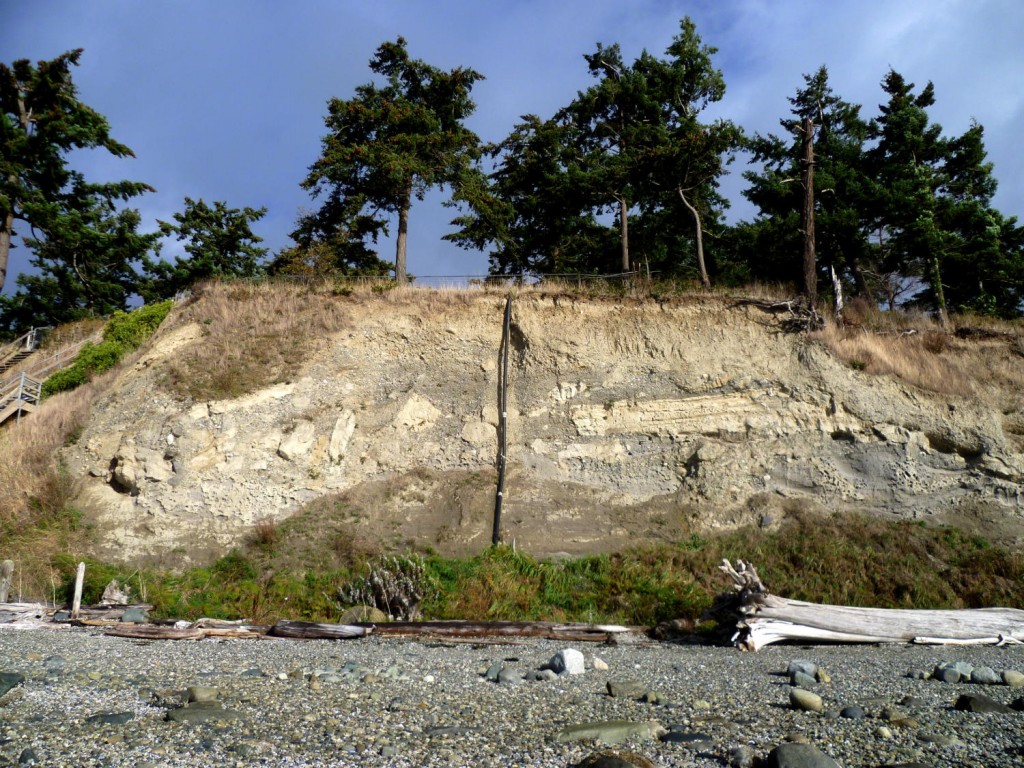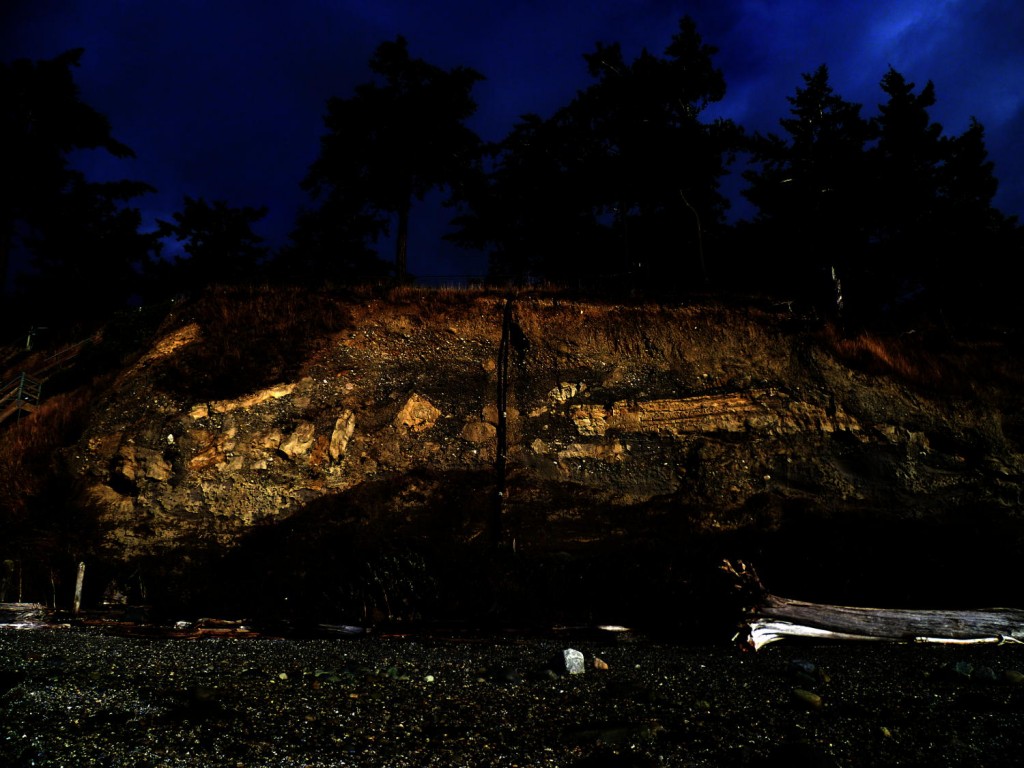Field Work — Island County, WA, Megabreccia
I’ve just returned from an 8-day trip to the state of Washington to serve as a field assistant to my colleague Brian Demet and participate in a class field-trip to observe some really cool geomorphology. The field work was primarily on Whidbey Island, a glacial-sediment island northwest of Seattle that has isostatically rebounded about 300 m since LGM. We also worked elsewhere in Island County during our trip.
An outcrop that Brian and I scouted had a large exposure of megabreccias. A breccia is a broadly defined rock type and is essentially a rock that is comprised of smaller angular clasts bound by a fine matrix. Breccias form in a wide variety of high-energy environments that produce similar but distinctly different rocks; the key similarity is proximal and high-energy deposition. Below is an example of a common-looking breccia.

The outcrop that I show below is the exposure of a megabreccia (mega- means large scale) within the glacially-derived sediment that the Whidbey Island bluffs are comprised of. Part of Brian’s thesis will be putting this outcrop into a broader context and story, to try and better understand grounding zone wedge deposits under the Antarctic ice sheet—but that’s another post for another time!
The outcrop here is approximately 60 m wide, and 15–20 m tall.


